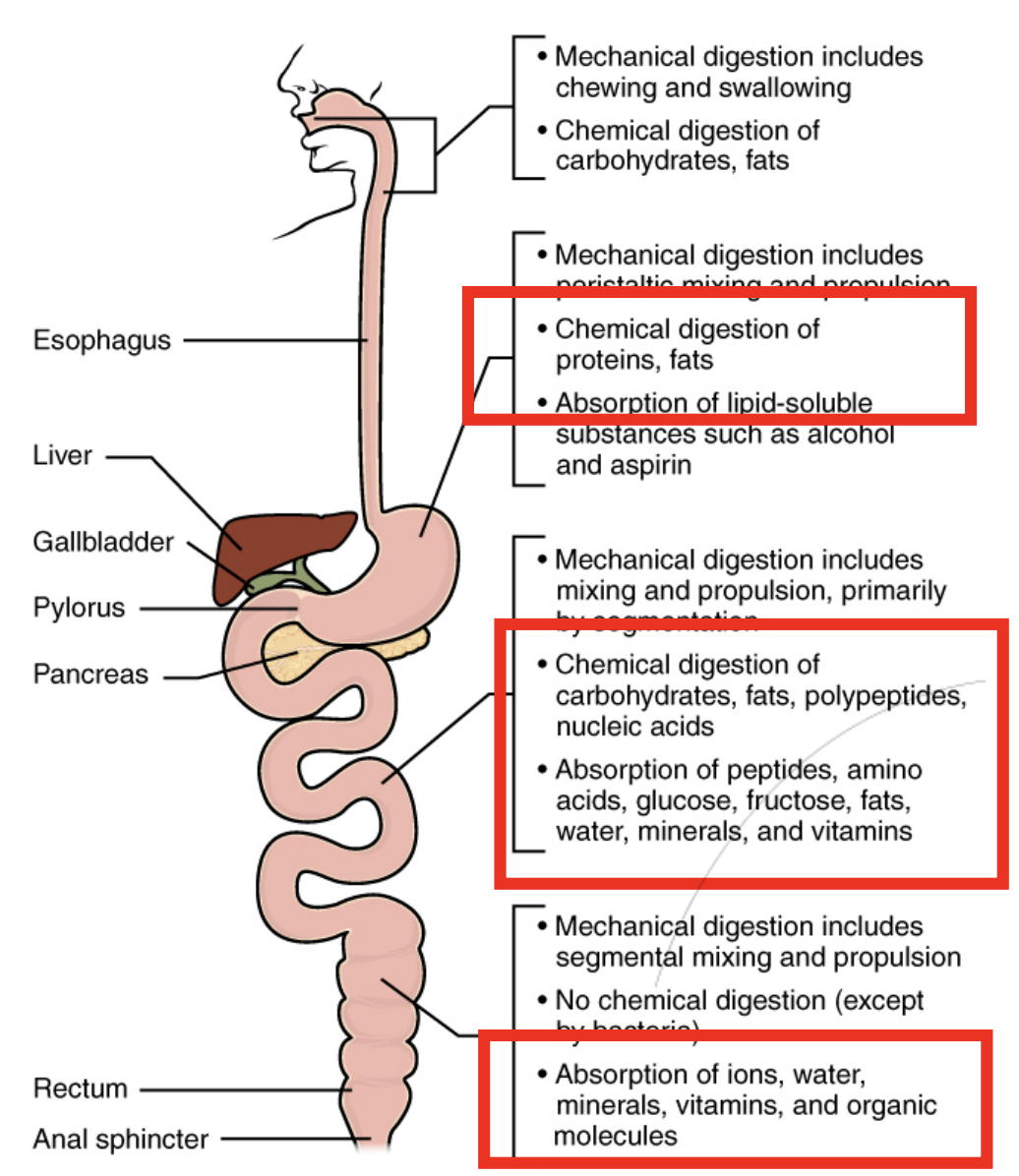Digestion and Absorption - Details
1/10
There's no tags or description
Looks like no tags are added yet.
Name | Mastery | Learn | Test | Matching | Spaced |
|---|
No study sessions yet.
11 Terms
Mechanical Digestion
Physically breaking down food into smaller fragments
Special types of contractions:
Chewing: In mouth - food turns into bolus
Churning: In stomach - bolus turns into chyme via unique peristalsis
Segmentation: In small intestines contractions move chyme in both directions to allow greater mixing of chyme with digestive juices
Chemical Digestion
Chemical enzymes help break down matter:
Stomach acids:
G cells: release Gastrin (hormone) that stimulates Parietal cells to release HCl (gastric acid)
Chief cells: Pepsinogen
Parietal cells : Hydrochloric Acid (HCl)
Small Intestine:
Bile
Produced in the Liver and stored in Gall bladder – Digestive enzymes
Pancreatic enzymes
Brush border enzymes
Carbohydrate Digestion
Begins in oral cavity (salivary amylase breakd down carbohydrates)
Stomach is too acidic, inhibits amylase activity
Continues in small intestines (pancreatic amylase, brush border enzymes) (secretin neutralises pH)
Digestion:
Polymer → Monomers
Complex sugards into simple sugars
Complex sugars: Polysaccharides
Simple sugars: Monosaccharides & disaccharides
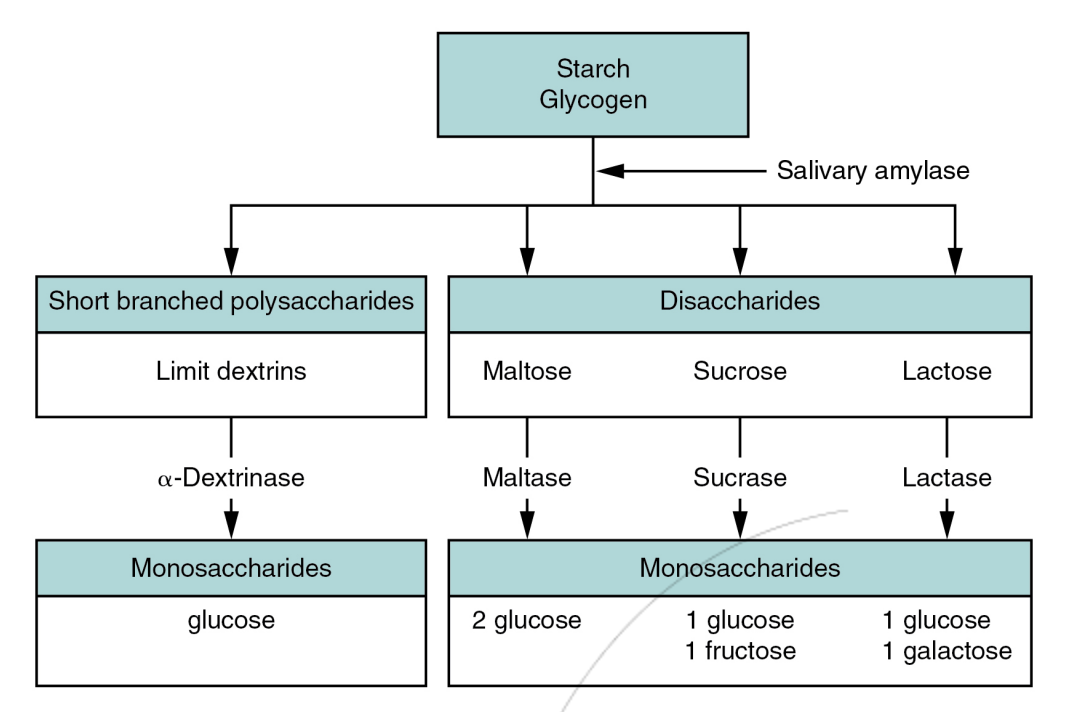
Carbohydrate Absorption
Happens in small intestine - enterocytes
Lumen of small intestine → bloodstream in blood vessels
Glucose/Galactose transport:
Na+ exits enterocytes into blood vessels via Na-K pump.
Na+ concentration gradient forms: High concentration in lumen, low concentration in enterocytes
Na+ enters enterocytes via co-transport with glucose and galactose.
Other transport proteins facilitate movement of glucose/galactose out of enterocytes, into bloodstream
Fructose transport:
Fructose transported via facilitated diffusion

Protein Digestion 1 (Stomach)
Begins in stomach
Key fact: Pepsin breaks down protein. Pepsin has optimal enzyme activity in highly acidic conditions.
Bolus enters stomach, distension, pH levels increase (more alkaline)
Parasymphathetic activity triggered.
G cells release gastrin (hormone).
Gastrin triggers chief cells release pepsinogen (inactive pepsin) & gastric lipase
Gastrin triggers release of gastric acid (HCL acid) by parietal cells. This increases stomach acidity, lowering pH.
pH lowers to optimal levels, activating pepsinogen into pepsin.
Pepsin breaks down proteins into polypeptide chains (primary structure)
Proteins: Polymers called polypeptides. Chains of amino acids.
Digestion:
Polymer → Monomers
Polypeptides turn into amino acids.

Protein Digestion 2 (Small Intestine)
Continues in small intestine
Pancreatic enzymes
Inactive: Trypsinogen & Chymotrypsinogen
Active: Trypsin & Chymotrypsin
Breaks down polypeptide chains into simpler dipeptides/tripeptides
Brush border enzymes
Enteropeptidase
Activates trypsinogen into trypsin
Aminopeptidase
Final step that breaks dipeptides/tripeptides into amino acids
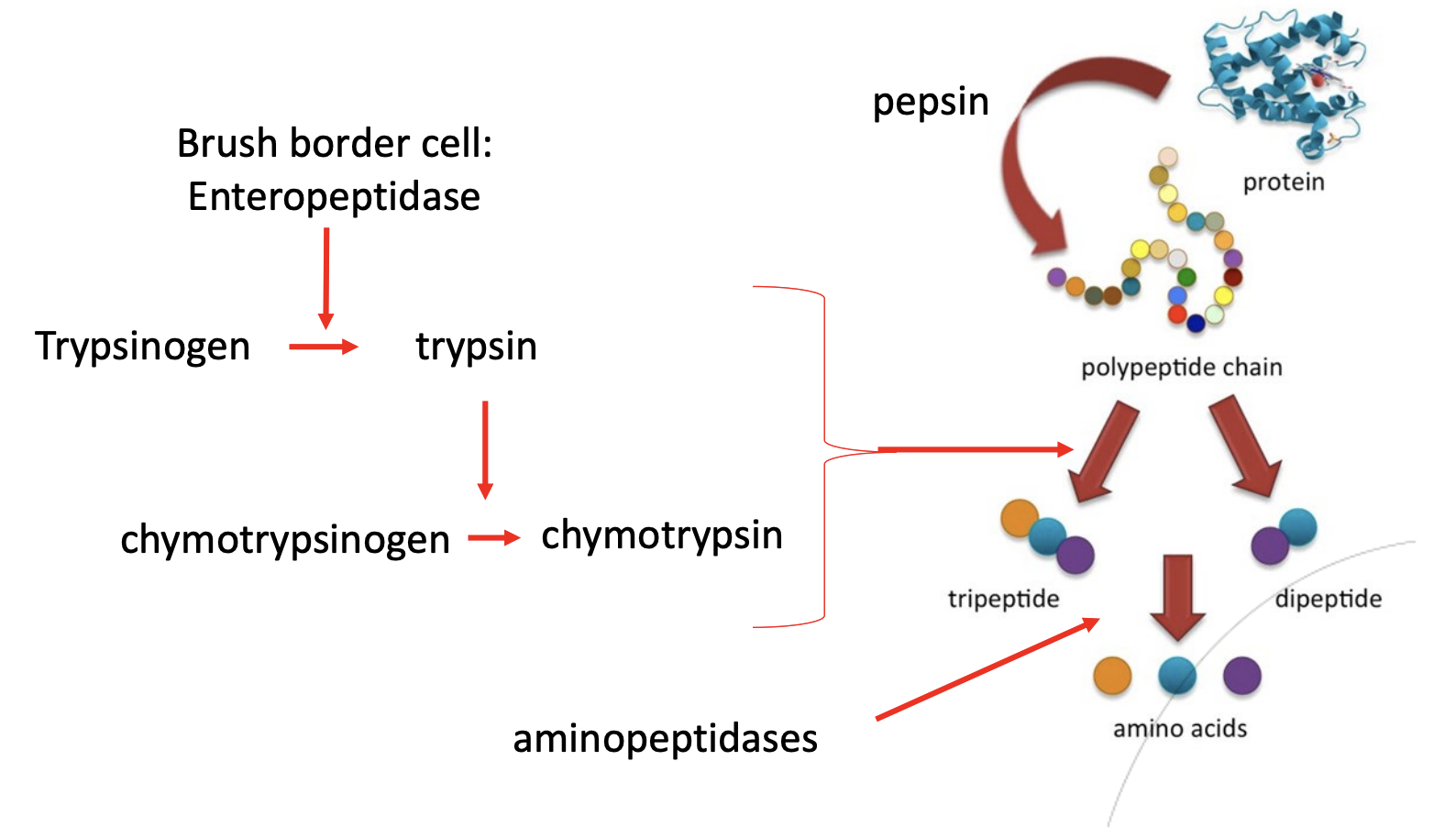
Protein Absorption
Occurs in small intestines via enterocytes
Amino acid transport:
Na+ exits enterocytes into blood vessels via Na-K pump.
Na+ concentration gradient forms: High concentration in lumen, low concentration in enterocytes
Na+ & H+ ions enter enterocytes via co-transporters with amino acids or di/tripeptides.
Other transport proteins facilitate movement of amino acids out of enterocytes, into bloodstream

Lipid Digestion
Key fact: Lipids are not water soluble, thus tend to cluster as large globules which must be broken down to absorb.
Begins in stomach (minor digestion)
Bolus enters stomach, distension, pH levels increase (more alkaline)
Parasymphathetic activity triggered.
Chief cells release pepsinogen (inactive pepsin) & gastric lipase
Fatty acids become partially emulsified.
Continues in small intestine (major digestion)
Gall bladder releases bile into small intestines (duodenum)
Pancreas releases lipases
Bile emulsifies fat globules
Lipases emulsify smaller fat globules
Digestion:
Polymer → Monomers
Triglycerides broken down into fatty acids & monoglycerides.
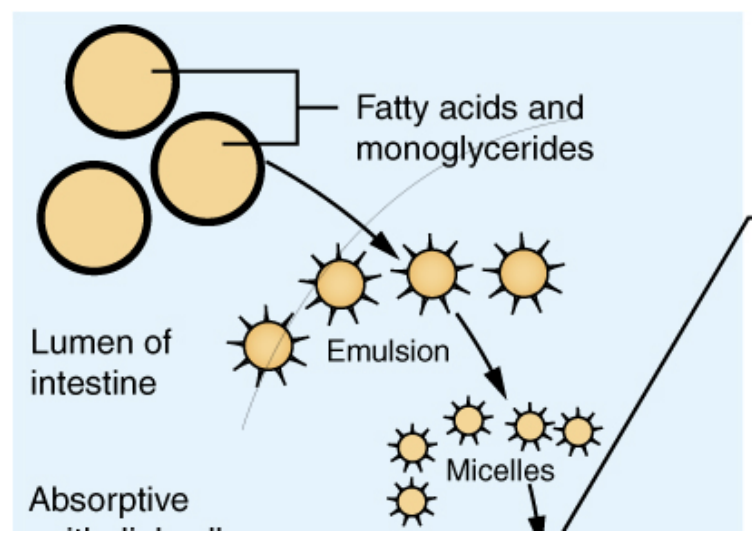
Lipid Absorption
Occurs in small intestines via enterocytes
Short- and medium- chain fatty acids absorbed via simple diffusion
Bile salts cluster around these fatty acids/monoglycerides, pushing them close enough to microvilli for absorption
Long- chain fatty acids diffuse into enterocytes, where they are combined with proteins to create chylomicrons
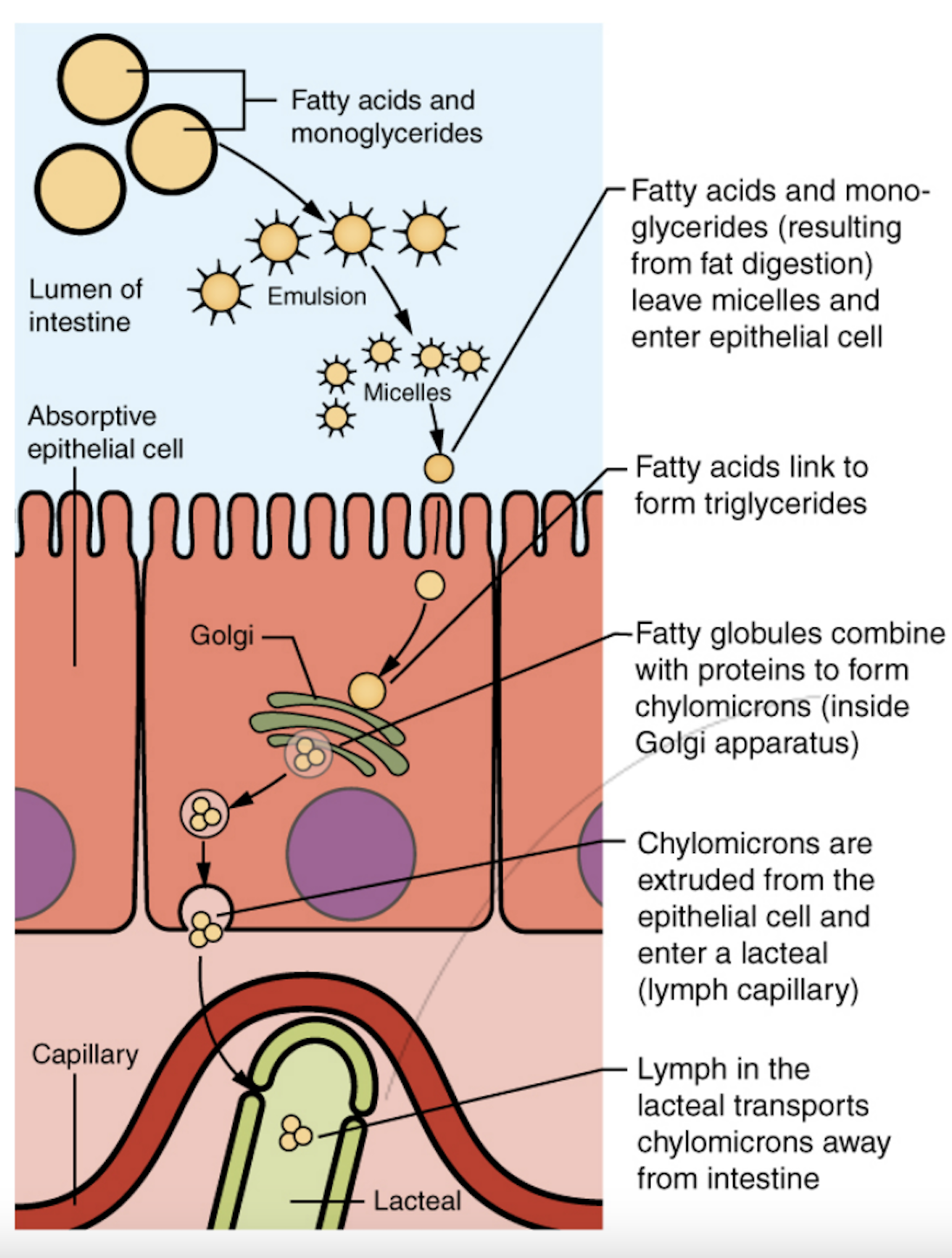
Water Absorption
Key fact: Movement of sodium out of GI track directs movement of water out of digestive track into the body.
Daily water/fluid intake
Fluid intake via drinks is roughly 1-2 litres
Gastric secretions add 6-7 litres
90% of this water is absorbed in the small intestine:
Tight coupling between water and sodium absorption
As Na-K pumps push sodium/solutes out of enterocytes into bloodstream, water follows.
Most of remaining water is absorbed within large intestines.

